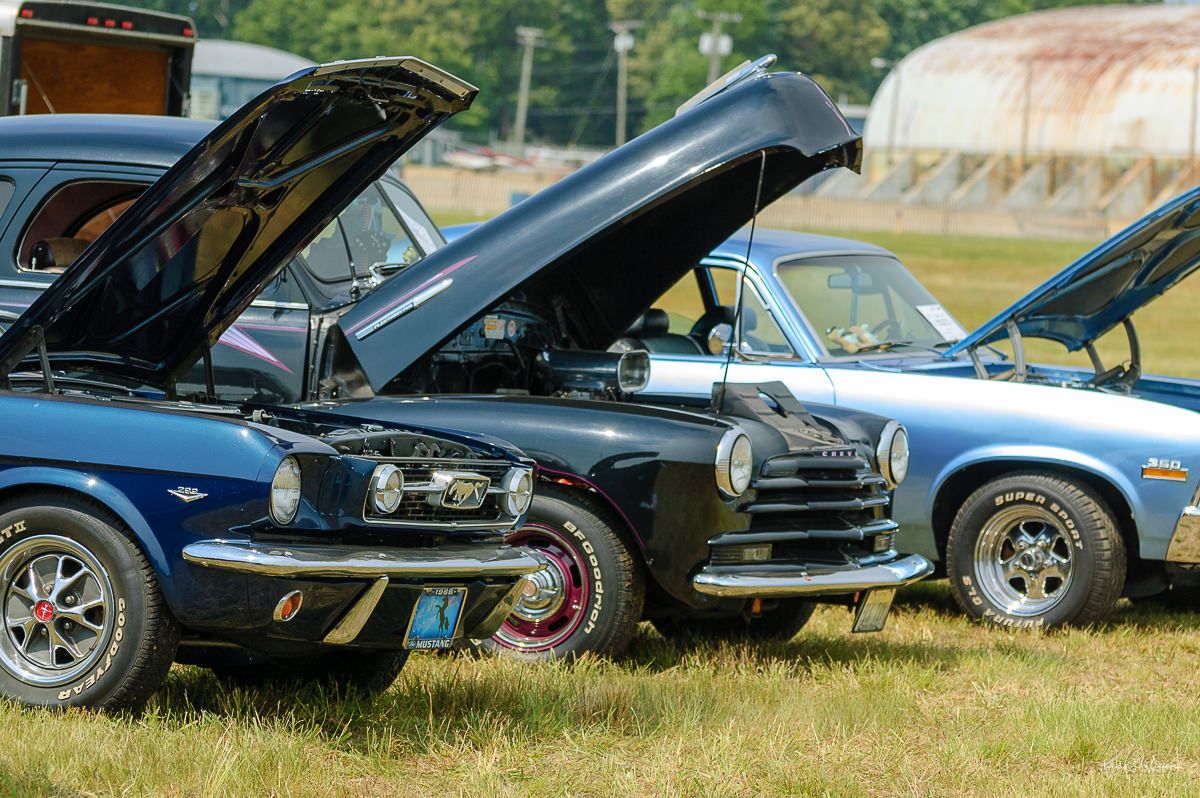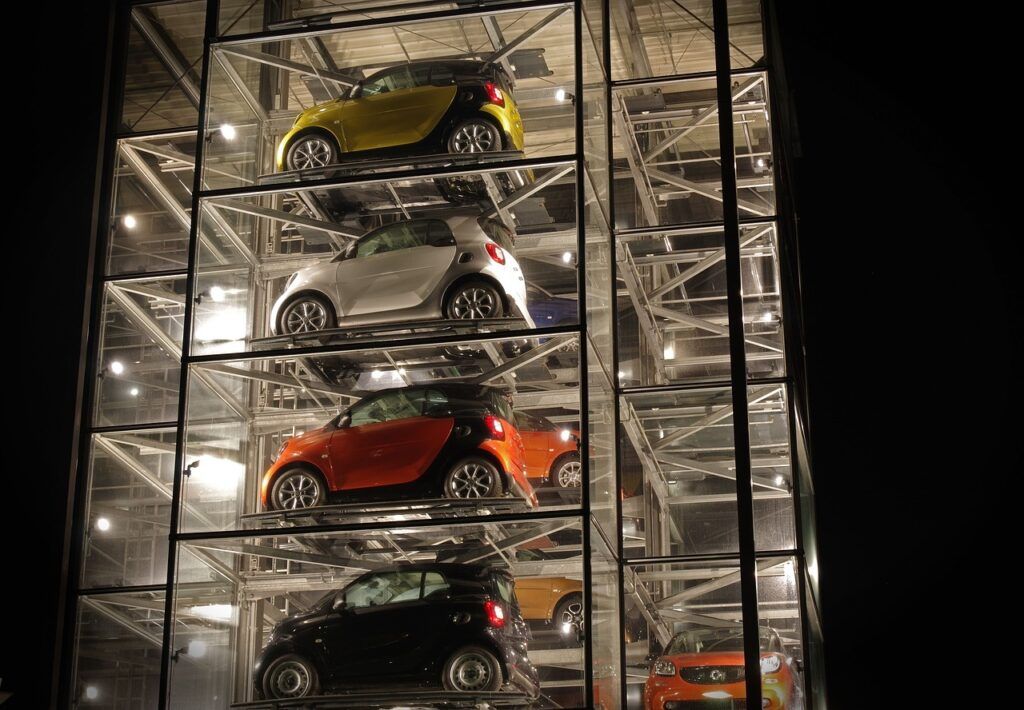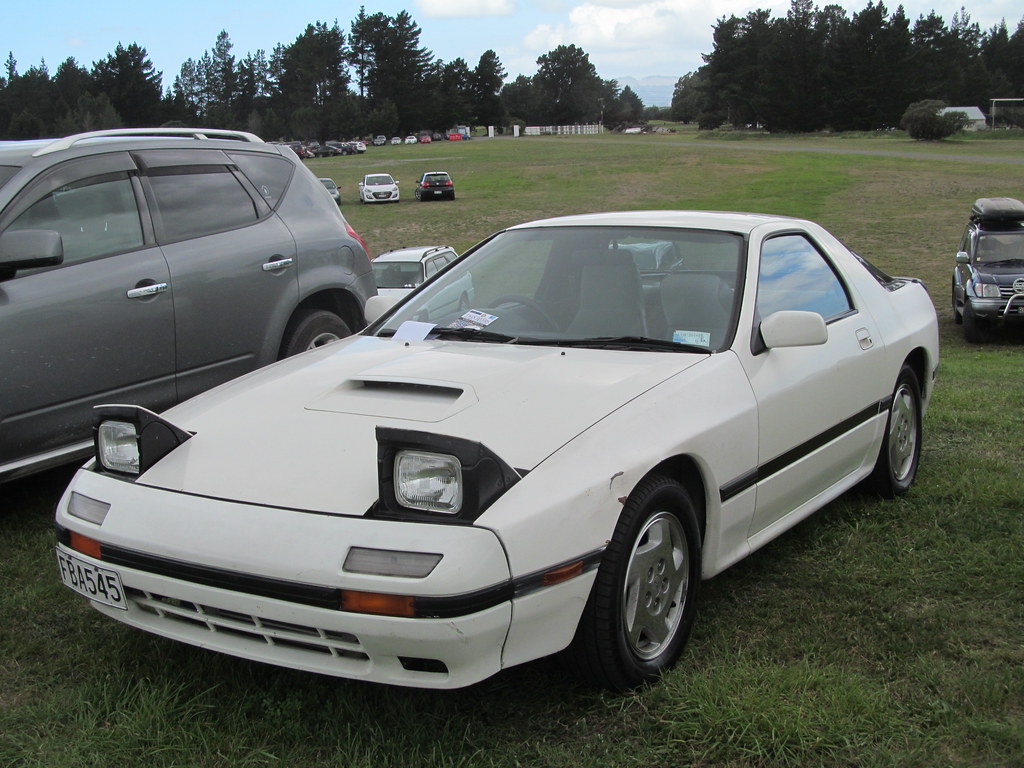
Let’s face it. Sometimes, our cars let us down, turning what should be an exciting new purchase into a source of constant frustration and financial strain. Vehicle manufacturers roll out cars that look promising and are heavily marketed, but often they simply don’t live up to the hype or the essential demands of daily reliability. This can be a particularly bitter pill to swallow after spending tens of thousands of dollars or committing to a multi-year car loan, leading directly to a classic case of buyer’s remorse. Unfortunately, as many consumers discover, this scenario plays out far too often in the automotive world.
Considering how much new and used cars go for these days, making an informed decision is more critical than ever. Making a buying decision based only on the exterior aesthetics and advertised specifications might get you into serious trouble down the road. This is where the experiences of other vehicle owners become invaluable; learning from their mistakes is one of the most effective ways to make better choices for your own purchase, avoiding the pitfalls that have snared so many others. Nearly 40% of consumers who’ve purchased a vehicle have regrets, with the most common being the make or model itself, underscoring the importance of due diligence.
In this comprehensive analysis, drawing on extensive user feedback and reliability data, we delve into a collection of vehicles that have consistently left their owners wishing they had chosen differently. Our aim is to empower you, the consumer, with practical, actionable information to navigate the complex automotive market. We begin by highlighting the first seven models from a list of fifteen that have been widely reported as sources of significant regret, detailing the specific issues that have turned ownership into a frustrating, costly, and often short-lived experience for countless drivers.
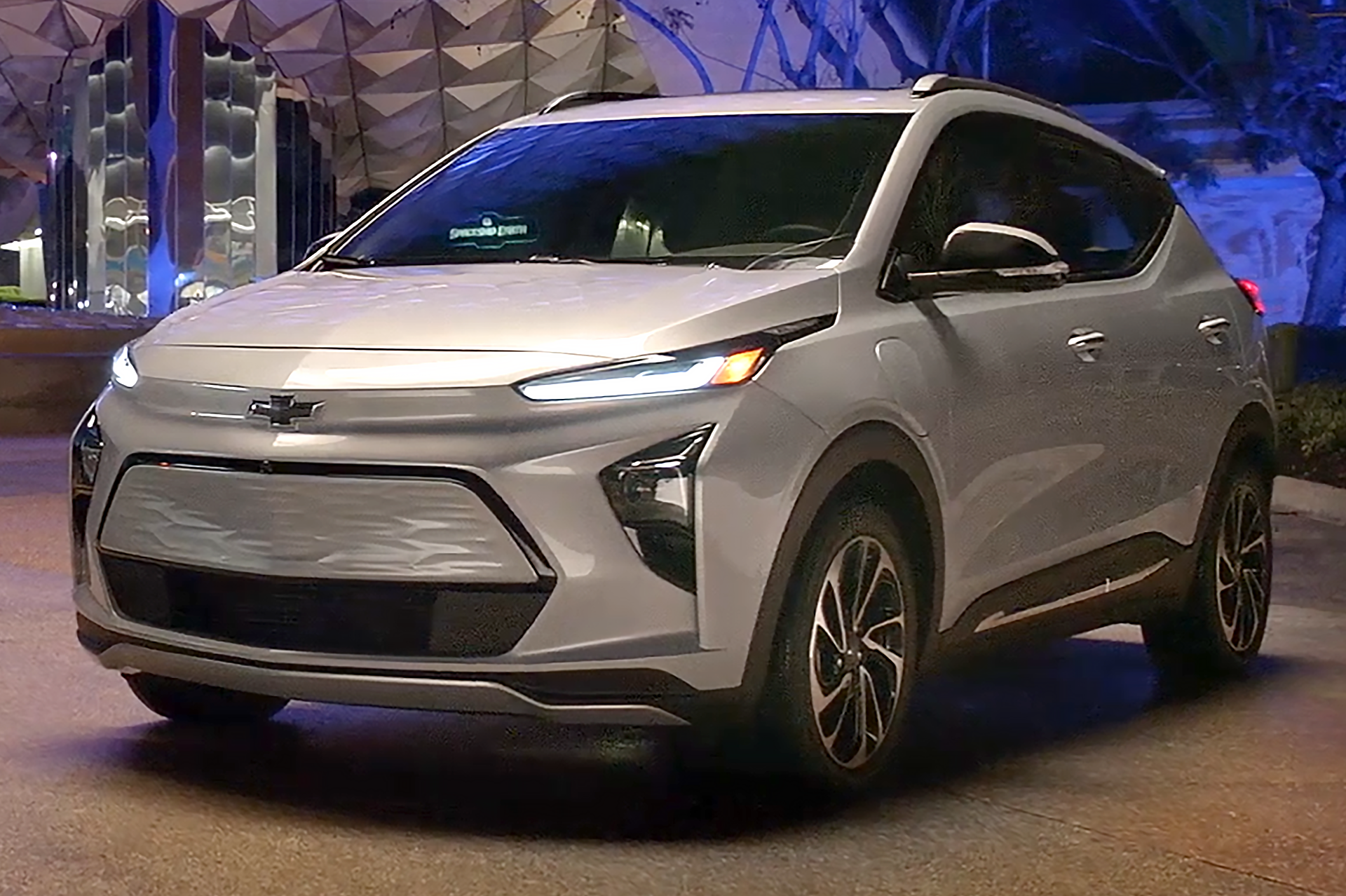
1. **Chevrolet Bolt**While General Motors’ Chevrolet Bolt initially garnered praise for its affordability and respectable electric range, its journey has been significantly plagued with persistent and serious problems that have overshadowed its virtues. Owners often highlight these issues as major sources of their discontent. What appeared to be a promising entry into the affordable EV market quickly revealed a darker side that led to widespread concern and dissatisfaction among its driver base.
The most infamous and concerning issue associated with the Bolt is undoubtedly its battery-related fires, a critical safety flaw that led to massive recalls in both 2020 and 2021. This dangerous problem stemmed from lithium-ion batteries manufactured by LG, which were prone to short-circuiting, overheating, and tragically igniting into flames. Such a fundamental safety defect not only jeopardized the vehicle’s integrity but also instilled significant fear and distrust among owners, forcing many to park their vehicles outside or limit their charging habits to mitigate risk.
Beyond these critical battery hazards, the Bolt’s ownership experience was further diminished by several other factors contributing to its overall mediocrity. Drivers frequently reported that the ride quality was merely “so-so,” lacking the comfort and refinement expected even in its price segment. Furthermore, space for rear passengers was often deemed inadequate, making longer journeys uncomfortable for those in the back and limiting the vehicle’s practicality for families or carpooling. These comfort and utility shortcomings compounded the battery issues, leading to a generally unsatisfying daily driving experience.
Additionally, the Bolt’s handling characteristics were also frequently described as uninspiring, failing to provide an engaging or confident feel on the road. This combination of significant safety recalls, unimpressive ride dynamics, cramped rear quarters, and lackluster handling meant that despite its initial appeal as an affordable EV, the Chevrolet Bolt consistently failed to deliver a truly reliable or enjoyable ownership experience, cementing its place on many owners’ regret lists. The promise of electric mobility was simply overshadowed by too many fundamental flaws.
Car Model Information: 2022 Chevrolet Bolt EUV FWD LT
Name: Chevrolet Bolt EV
Caption: 2022 Chevrolet Bolt EV
Manufacturer: General Motors
Production: unbulleted list
ModelYears: unbulleted list
Class: Subcompact car
BodyStyle: hatchback
Layout: Front-engine, front-wheel-drive layout
Predecessor: Chevrolet Spark EV
Categories: 2020s cars, All Wikipedia articles in need of updating, All articles containing potentially dated statements, All articles with unsourced statements, Articles containing potentially dated statements from February 2018
Summary: The Chevrolet Bolt EV (marketed in Europe as Opel Ampera-e) is a battery electric subcompact hatchback manufactured and marketed by General Motors under its Chevrolet brand from late 2016 until late 2023, with a brief hiatus between mid-2021 and early 2022.
The first-generation Bolt was developed and manufactured with LG Corporation. Sales of the 2017 Bolt began in California in December 2016; it was released nationwide and international markets release in 2017. A rebadged European variant was marketed as the Opel Ampera-e in mainland Europe. In 2017, the Bolt was the second-best-selling plug-in car in the United States. It was named the 2017 Motor Trend Car of the Year, the 2017 North American Car of the Year, an Automobile magazine 2017 All Star, and was listed in Time magazine’s Best 25 Inventions of 2016. The Ampera-e was discontinued after 2018. By the end of 2020, GM had sold 112,000 Bolt and Ampera-e cars worldwide. The first-generation Bolt had been subject to at least three recalls due to battery fire risks.
In mid-2023, GM officials said they would discontinue the Bolt; after outcry, they announced plans for a next-generation model, which is expected to be revealed in 2025 for model year 2026.
Get more information about: Chevrolet Bolt
Buying a high-performing used car >>>
Brand: Chevrolet Model: Bolt
Price: $23,294 Mileage: 30,332 mi.
Read more about: 12 Cars That Made Drivers Say ‘Nope, Not Again!’ – Your Ultimate Guide to Avoiding Instant Regret on Wheels
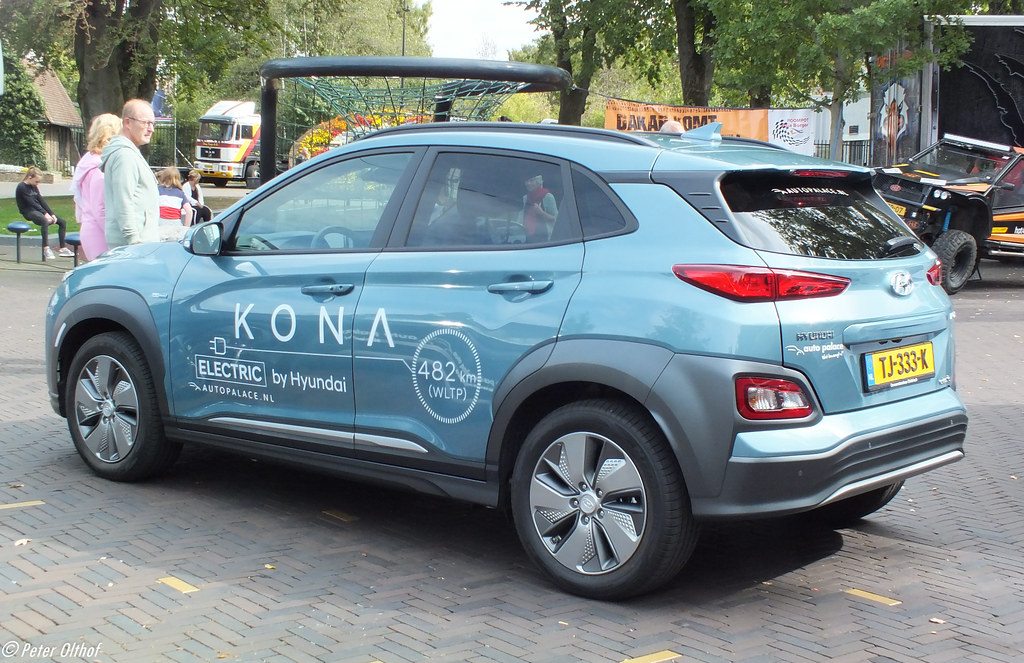
2. **Hyundai Kona Electric**Hydraulic has made significant strides in the electric vehicle market, rolling out several well-received models that have earned critical acclaim. However, even successful manufacturers can have missteps, and the Hyundai Kona Electric stands out as a notable “clunker” in their lineup. Despite its modern styling and initial appeal, this particular EV has sadly made a name for itself through a series of disappointing performance and critical safety issues that have left owners frustrated and disillusioned.
Unfortunately, the Kona Electric’s history is marred by its own share of battery fires and subsequent recalls, mirroring some of the most severe problems seen in other early EV models. The carmaker was compelled to issue a worldwide recall in both 2020 and 2021 specifically to address these fire risks. The primary solution involved replacing battery packs in affected EVs, a costly and inconvenient measure intended to “nip the fire risks in the bud” and restore consumer confidence. This extensive recall process highlighted a fundamental flaw in the vehicle’s core component, creating significant anxiety for owners.
However, for many owners, the battery issues were merely “the tip of the iceberg” when it came to the Kona Electric’s reliability woes. Beyond the immediate danger of fire, other, less dramatic but equally frustrating problems emerged, contributing to a broader pattern of unreliability. These underlying issues often led to unexpected repair costs and inconvenient downtime, adding financial sting to the ownership experience.
The constant threat of battery-related problems, coupled with additional unaddressed reliability concerns, has resulted in a pervasive sense of “buyer beware!” among prospective and current owners. The Hyundai Kona Electric, despite its potential as an affordable and stylish EV, has proven to be a source of persistent headaches and regret, with its significant safety and reliability deficits overwhelmingly outweighing its positive attributes and leaving many owners wishing they had explored other options in the rapidly evolving electric vehicle market.
Car Model Information: 2021 Volkswagen Atlas 2.0T SE
Name: Hyundai Kona
Caption: Hyundai Kona N Line (SX2)
Manufacturer: Hyundai Motor Company
Aka: Hyundai Kauai (Portugal)
Production: 2017–present
ModelYears: 2018–present
Class: Subcompact crossover SUV
BodyStyle: SUV
Layout: ubl
Categories: 2020s cars, All-wheel-drive vehicles, All Wikipedia articles in need of updating, Articles containing Chinese-language text, Articles containing Korean-language text
Summary: The Hyundai Kona (Korean: 현대 코나) is a subcompact crossover SUV produced by the South Korean manufacturer Hyundai. The first-generation Kona debuted in June 2017 and the production version was revealed later that year. It is positioned between the Venue or Bayon and the Tucson in Hyundai crossover SUV line-up. The battery electric version called the Kona Electric (or Kona EV) was first launched in South Korea during the first half of 2018 and rolled out gradually worldwide afterwards.
Get more information about: Hyundai Kona
Buying a high-performing used car >>>
Brand: Hyundai Model: Kona Electric
Price: $25,919 Mileage: 49,076 mi.
Read more about: 12 Cars That Made Drivers Say ‘Nope, Not Again!’ – Your Ultimate Guide to Avoiding Instant Regret on Wheels
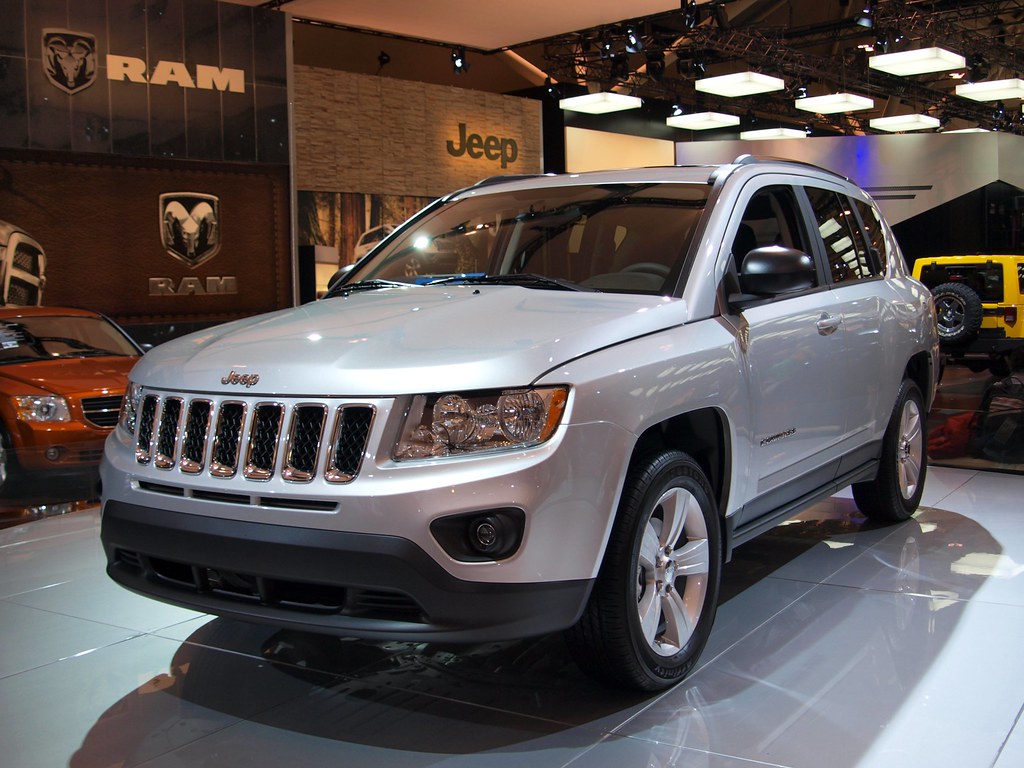
3. **Jeep Compass**As a compact SUV, the Jeep Compass often appeals to buyers seeking a blend of rugged capability and urban maneuverability. However, the reality of owning a Jeep Compass across various model years has frequently been anything but smooth sailing. Owners consistently report a litany of serious issues that transform the ownership experience into what some have colorfully described as a “migraine headache on wheels.” Prospective buyers are often advised to steer clear to avoid this particular brand of automotive frustration.
A particularly common and egregious issue that owners complain about involves the vehicle’s transmissions. Both the continuously variable transmission (CVT) and the 9-speed automatic transmissions found in various Compass models have been notorious for experiencing “herky-jerky shifting” and, in more severe cases, catastrophic failure. This erratic and unreliable performance not only diminishes driving comfort but also poses significant safety concerns and leads to expensive, unforeseen repair bills that quickly erode the perceived value of the vehicle.
Beyond the critical transmission problems, the Jeep Compass suffers from a suite of other disappointing performance flaws. Many owners report persistent issues such as poor engine performance, which translates into sluggish acceleration and a generally uninspiring driving dynamic. Compounding these mechanical woes are complaints of excessive oil consumption, an issue that requires constant monitoring and topping off, adding an irritating and costly chore to routine maintenance. These engine-related problems significantly impact the vehicle’s long-term reliability and operational expenses.
Furthermore, electrical system issues are another frequent complaint among Compass owners, ranging from minor glitches in infotainment to more significant failures that affect vehicle functionality. The combination of these persistent and varied problems—including unreliable transmissions, underperforming engines, excessive oil consumption, and electrical faults—makes the Jeep Compass a frequent source of profound buyer’s remorse. For many, its initial appeal quickly fades when confronted with the reality of ongoing maintenance, repair costs, and a frustratingly undependable daily drive.
Car Model Information: 2017 Jeep Wrangler Unlimited Sport
Name: Jeep Compass
Caption: 2019 Jeep Compass
Manufacturer: Jeep
Production: 2006–present
ModelYears: 2007–present
Class: Compact crossover SUV
BodyStyle: SUV
Layout: Front-engine, front-wheel-drive layout
Chassis: Unibody
Categories: 2010s cars, 2020s cars, All-wheel-drive vehicles, All Wikipedia articles written in American English, Articles with short description
Summary: The Jeep Compass is a compact crossover SUV, introduced in 2006 for the 2007 model year. The first generation Compass and Patriot, its rebadged variant, were among Jeep’s first crossover SUVs. The second-generation Compass debuted in September 2016 in Brazil and at the Los Angeles International Auto Show in November 2016, sharing a modified platform with the Renegade. It is positioned between the smaller Renegade and the larger Cherokee globally or the Commander in South America. The third-generation Compass debuted in May 2025, built on the STLA Medium by Stellantis, shared with other PSA Groupe vehicles.
Get more information about: Jeep Compass
Buying a high-performing used car >>>
Brand: Jeep Model: Compass
Price: $20,725 Mileage: 111,103 mi.
Read more about: 12 Cars That Made Drivers Say ‘Nope, Not Again!’ – Your Ultimate Guide to Avoiding Instant Regret on Wheels
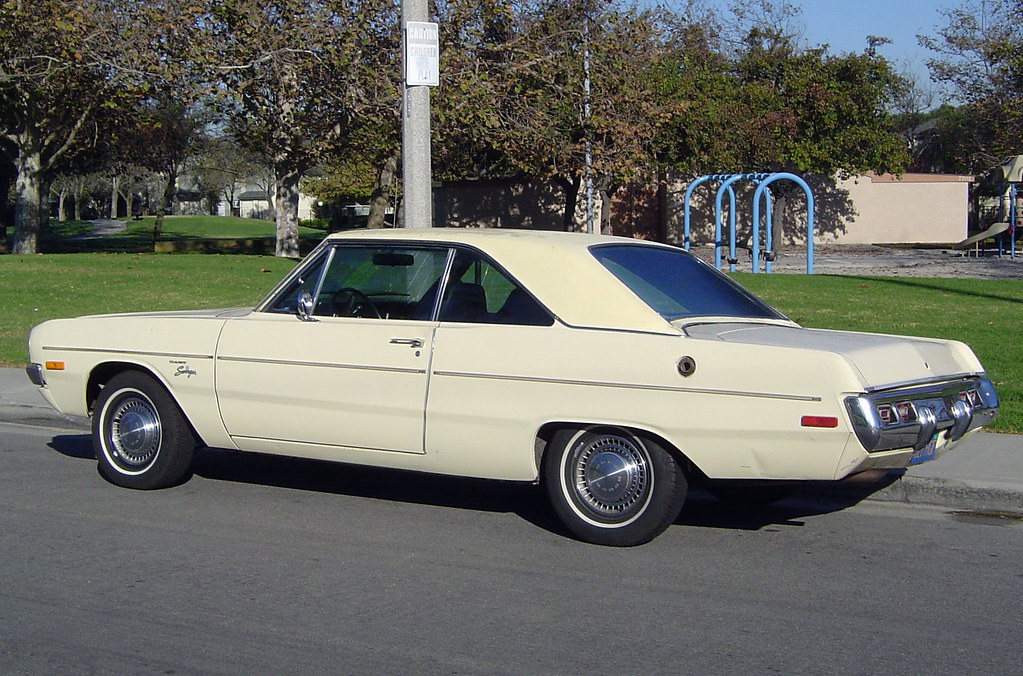
4. **Dodge Dart**The Dodge Dart, introduced as a compact sedan, unfortunately earned a reputation for having what owners described as “full-size car problems.” This seemingly paradoxical description aptly encapsulates the broad range and severity of issues that plagued the vehicle throughout its production run. For many who purchased the Dart, the experience quickly devolved into a cycle of repairs and dissatisfaction, leaving them to wonder where to even begin in listing its shortcomings.
Indeed, the problems with the Dodge Dart were not confined to a single system but rather permeated the entire vehicle, creating a comprehensively unreliable ownership experience. Owners reported significant issues “from the transmission to the engine and from the suspension to the brakes.” This widespread mechanical unreliability meant that virtually no major component was immune from failure or poor performance, making the Dart a vehicle that consistently demanded attention and repairs across multiple fronts.
This pervasive unreliability translated directly into deep owner dissatisfaction, a sentiment that was quantifiably reflected in consumer surveys. According to data from Consumer Reports, a significant majority—around six in 10 buyers—explicitly stated that they were not satisfied with their Dodge Dart. This high percentage of dissatisfaction underscores that the Dart’s problems were not isolated incidents but rather systemic failures that impacted a substantial portion of its owner base, leading to widespread disappointment.
Ultimately, the Dodge Dart became a car that many owners unequivocally wished they had never bought. Its inability to deliver consistent performance or reliability across its critical systems, combined with a stark lack of owner satisfaction, cemented its legacy as a vehicle to be approached with extreme caution. For consumers seeking a dependable compact sedan, the Dart represented a costly lesson in choosing a vehicle that struggled to meet even basic expectations of quality and longevity.
Car Model Information: 1972 Dodge Dart Swinger
Name: Dodge Dart
Caption: 1966 Dodge Dart GT 2-door hardtop
Manufacturer: Dodge
Production: 1959–1976 (US market)
ModelYears: 1960–1976 (US market)
Class: Full-size
Layout: FR layout
Predecessor: Dodge Coronet#Fourth generation (1957–1959)
Related: Plymouth Valiant,Chrysler Valiant,Dodge Phoenix
Successor: Dodge Aspen,Dodge Diplomat,Talbot Tagora
Categories: 1970s cars, All articles with unsourced statements, Articles with short description, Articles with unsourced statements from December 2023, Articles with unsourced statements from May 2025
Summary: The Dodge Dart is a line of passenger cars produced by Dodge from the 1959 to 1976 model years in North America, with production extended to later years in various other markets.
The production Dodge Dart was introduced as a lower-priced full-size model in 1960 and 1961, but became a mid-size car for one model year for 1962, and was then reduced to a compact for two generations, from 1963 to 1976.
Chrysler had first used ‘Dart’ name plates on two Italian styled show cars, in 1956 and 1957, before it became a Dodge model name. The Dart nameplate was resurrected for a Fiat-derived compact car that was introduced in 2012.
Get more information about: Dodge Dart
Buying a high-performing used car >>>
Brand: Dodge Model: Dart
Price: $18,250 Mileage: 40,424 mi.
Read more about: 12 Cars That Made Drivers Say ‘Nope, Not Again!’ – Your Ultimate Guide to Avoiding Instant Regret on Wheels

5. **Dodge Grand Caravan**The Dodge Grand Caravan holds a unique place in automotive history, having served as a family hauler for generations, creating countless memories for its occupants—some fond, but often many that were not. Despite its iconic status and utility, the minivans themselves were often anything but smooth driving, frequently subjecting owners to a less-than-ideal experience characterized by mechanical frustrations rather than seamless journeys. Its role as a reliable family vehicle was often undermined by significant underlying issues.
A predominant and consistently frustrating complaint from owners revolved around transmission failure, a critical flaw for a vehicle designed to carry precious cargo. Before these transmissions would ultimately “go kaput,” they frequently exhibited a range of alarming symptoms. These included issues like delayed gear engagement, where the vehicle hesitated to select a gear, rough shifting that made for an uncomfortable ride, and slipping, where the transmission failed to maintain power transfer efficiently. These issues not only compromised performance but also raised significant safety concerns, making the minivan unpredictable.
Beyond the severe transmission problems, many owners also reported a cascade of other reliability issues that further complicated ownership. Electrical system problems were a common grievance, leading to malfunctioning components, intermittent features, and frustrating diagnostic challenges. Additionally, heavy oil consumption was another frequent complaint, necessitating constant monitoring and regular, often costly, top-ups between scheduled maintenance, adding to the vehicle’s operational burden and environmental impact.
The cumulative effect of these pervasive mechanical and electrical failures left many Grand Caravan owners with a profound sense of regret. The sentiment was clear: if they “could rewind time and have a do-over, they would gladly choose something else.” This strong desire for an alternative choice highlights how a vehicle, despite its utilitarian purpose, can become a source of immense dissatisfaction when fundamental reliability and performance fall short, making the Grand Caravan a regrettable purchase for countless families.
Car Model Information: 2021 Volkswagen Atlas 2.0T SE
Caption: 2011 Dodge Grand Caravan Mainstreet
Name: Dodge Grand Caravan
Manufacturer: Chrysler Corporation,Daimler AG,Chrysler LLC,Chrysler Group LLC,FCA US LLC
Class: Minivan
Layout: FF layout,F4 layout
Production: November 2, 1983 –August 21, 2020
ModelYears: 1984–2020
Related: Plymouth Voyager,Chrysler Town & Country (minivan),Dodge Mini Ram,Chrysler Voyager,Volkswagen Routan
Assembly: Windsor, Ontario,Fenton, Missouri,Fenton, Missouri,Fuzhou
Successor: Dodge Journey,Chrysler Voyager
Categories: All-wheel-drive vehicles, All articles with unsourced statements, Articles with short description, Articles with unsourced statements from December 2017, Articles with unsourced statements from May 2009
Summary: The Dodge Caravan is a series of minivans manufactured by Chrysler from the 1984 through 2020 model years. The Dodge version of the Chrysler minivans, was marketed as both a passenger van and a cargo van (the only version of the model line offered in the latter configuration). For 1987, the model line was joined by the long-wheelbase Dodge Grand Caravan. Produced in five generations across 36 model years, the Dodge Caravan is the second longest-lived Dodge nameplate (exceeded only by the Dodge Charger). Initially marketed as the Dodge counterpart of the Plymouth Voyager, the Caravan was later slotted between the Voyager and the Chrysler Town & Country. Following the demise of Plymouth, the model line became the lowest-price Chrysler minivan, ultimately slotted below the Chrysler Pacifica.
Sold primarily in the United States and Canada, the Dodge Caravan was also marketed in Europe and other international markets under the Chrysler brand (as the Chrysler Voyager or Chrysler Caravan). From 2008 onward, Dodge marketed the model line only as the Grand Caravan; Ram Trucks sold a cargo-only version of the model line as the Ram C/V Tradesman. The model line was also rebranded as the Volkswagen Routan from 2009 through 2014.
After the 2020 model year, the Dodge Grand Caravan was discontinued, ending production on August 21, 2020. For 2021 production, the Grand Caravan nameplate was moved to Chrysler, which used it for a Canadian-market version of the Chrysler Pacifica (in the United States, the exact vehicle was marketed as the Chrysler Voyager).
For its entire production run, the Dodge Caravan/Grand Caravan was manufactured by Chrysler Canada (now Stellantis Canada) at its Windsor Assembly facility (Windsor, Ontario). From 1987 until 2007, the model line was also manufactured by Chrysler at its Saint Louis Assembly facility (Fenton, Missouri). Since their introduction in late 1983, over 14.6 million Chrysler minivans have been sold worldwide (including export versions and versions sold through rebranding).
Get more information about: Dodge Caravan
Buying a high-performing used car >>>
Brand: Dodge Model: Grand Caravan
Price: $25,919 Mileage: 49,076 mi.
Read more about: 12 Cars That Made Drivers Say ‘Nope, Not Again!’ – Your Ultimate Guide to Avoiding Instant Regret on Wheels

6. **Nissan Sentra**While it is true that most vehicle models, including the Nissan Sentra, have certain model years that prove more reliable than others, a specific period in the Sentra’s history stands out as particularly problematic, if not outright “horrific,” for many owners. Buyers are strongly advised to “stay away from the ones made from 2013 to 2019,” as these particular model years are widely associated with a litany of mechanical and reliability issues that have fostered deep regret among their purchasers. This era of the Sentra frequently failed to deliver on basic expectations of dependability.
At the forefront of these issues was the infamous Continuously Variable Transmission (CVT), which proved to be a persistent “thorn in the side of many Sentra owners” during this period. The CVT in these models was notorious for a range of malfunctions including overheating, which could lead to significant damage and premature failure. Drivers also frequently experienced jerky acceleration, making for an uncomfortable and unpredictable driving experience, alongside unsettling shuddering during operation. These transmission problems not only undermined driving pleasure but also signaled deeper mechanical vulnerabilities.
Among the laundry list of issues that plagued these Sentra models, engine stalling was another critical concern, posing both convenience and safety risks to drivers. Furthermore, the vehicle was subject to numerous recalls, which were related to vital safety components such as the airbags, seatbelts, and brakes, among other critical systems. These extensive safety recalls highlighted serious design or manufacturing deficiencies that directly impacted driver and passenger security, adding another layer of concern for owners.
The Nissan Sentra models produced between 2013 and 2019 represented a challenging and often frustrating ownership experience for many. The chronic and widespread problems with the CVT, combined with serious engine issues like stalling and a multitude of critical safety recalls, meant that these vehicles frequently failed to provide the reliable and safe transportation that consumers expect. This era of the Sentra serves as a stark warning, demonstrating how a car can quickly move from a practical purchase to a major source of ongoing headaches and financial strain, ultimately leading to significant buyer’s remorse.
Car Model Information: 2021 Nissan Sentra SV
Name: Nissan Sentra
Caption: 2021 Nissan Sentra SR (B18; Canada)
Manufacturer: Nissan
Aka: Nissan Sunny
Production: 1982–present
Class: Subcompact car
Predecessor: Nissan Sunny#B310
Categories: 1990s cars, 2000s cars, 2010s cars, 2020s cars, All Wikipedia articles written in American English
Summary: The Nissan Sentra is a series of automobiles manufactured by the Japanese automaker Nissan since 1982. Since 1999, the Sentra has been categorized as a compact car, while previously it occupied the subcompact class. Until 2006, Sentra was a rebadged export version of the Japanese Nissan Sunny, but since the 2013 model year, Sentra is a rebadged export version of the Sylphy. The Sentra nameplate is not used in Japan. Many other countries in Latin America sell their versions of the Sunny as the Sentra. In Mexico, the first three generations of the Sentra were known as the Nissan Tsuru (Japanese for crane), and the B13 model was sold under that name until 2017, alongside the updated models badged as Sentra.
In North America, the Sentra currently serves as Nissan’s compact car, despite being rated as a mid-size car by the EPA due to its interior volume since the 2007 model year. While previous Sentras were subcompacts, the Sentra has grown over the years, with the Nissan Versa having replaced the Sentra in the entry-level area.
The Sentra name was created for Nissan by Ira Bachrach of NameLab, and Bachrach describes the origin as “Nissan wanted consumers to understand that it was quite safe even though it was small. The word Sentra sounds like central as well as sentry, which evokes images of safety.”
Get more information about: Nissan Sentra
Buying a high-performing used car >>>
Brand: Nissan Model: Sentra
Price: $17,961 Mileage: 63,553 mi.
Read more about: 12 Cars That Made Drivers Say ‘Nope, Not Again!’ – Your Ultimate Guide to Avoiding Instant Regret on Wheels
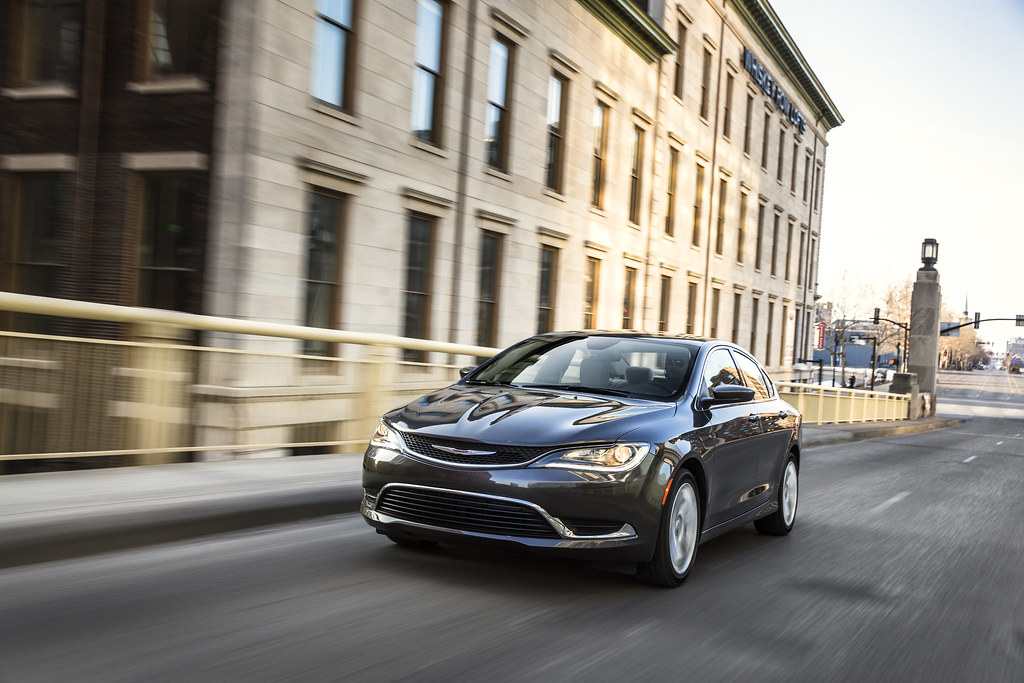
7. **Chrysler 200**The Chrysler 200, a mid-size sedan manufactured between 2011 and 2017, regrettably amassed a significant reputation for having “many reliability issues” throughout its production lifespan. This consistent pattern of mechanical and functional problems often caught owners off guard, quickly transforming the initial excitement of a new car into a prolonged period of frustration and unexpected expenses. For many, the vehicle simply did not live up to the brand’s promise or their personal expectations for a dependable daily driver.
Among the numerous reliability concerns, owners of the 2015, 2016, and 2017 models specifically found the 9-speed automatic transmission to be “especially problematic.” This advanced transmission, intended to offer efficiency and smooth operation, instead became a notorious weak point, frequently exhibiting erratic behavior and, in many cases, leading directly to costly transmission failure. This major component malfunction was often “just for starters,” indicating that other issues often followed, compounding the severity of the problem and significantly impacting the vehicle’s long-term viability and owner satisfaction.
Beyond the pervasive transmission woes, the Chrysler 200 also suffered from a range of “engine performance problems.” These issues could manifest in various ways, from reduced power output and inconsistent operation to more severe mechanical failures. Such engine difficulties not only diminished the driving experience by making acceleration sluggish or unreliable but also typically led to expensive repairs, further burdening owners with unforeseen costs and downtime, which deeply impacted their perception of the vehicle’s value.
Collectively, the critical and widespread issues with both the transmission and engine—two of a vehicle’s most fundamental and expensive components—rendered the Chrysler 200 a frequent source of profound buyer’s remorse. Owners who had invested in this sedan often found themselves grappling with costly repairs and persistent mechanical failures, ultimately regretting their purchase decision. The Chrysler 200, during its manufacturing run, consistently demonstrated how severe powertrain issues can quickly turn a hopeful acquisition into a regrettable and financially draining experience, leading many to wish they had opted for a more reliable alternative.
Car Model Information: 2015 Chrysler 200 S
Name: Chrysler 200
Manufacturer: Chrysler
Production: 2010–2016
ModelYears: 2011–2017
Assembly: Sterling Heights, Michigan
Class: Mid-size car
Sp: us
Predecessor: Chrysler Sebring
Categories: 2010s cars, All articles with dead external links, All articles with unsourced statements, Articles with dead external links from July 2020, Articles with permanently dead external links
Summary: The Chrysler 200 is a mid-size sedan that was manufactured and marketed by Chrysler from model years 2011 to 2017 across two generations in four-door sedan and two-door convertible (first generation only) body styles.
The 200 nameplate debuted on the 200C, a prototype hybrid vehicle shown at the 2009 North American International Auto Show in Detroit and based on the Chrysler 300. The 200C concept was engineered to accept either traditional gasoline, hybrid or full-electric powertrains.
Get more information about: Chrysler 200
Buying a high-performing used car >>>
Brand: Chrysler Model: 200
Price: $7,200 Mileage: 122,275 mi.
Read more about: 12 Cars That Made Drivers Say ‘Nope, Not Again!’ – Your Ultimate Guide to Avoiding Instant Regret on Wheels
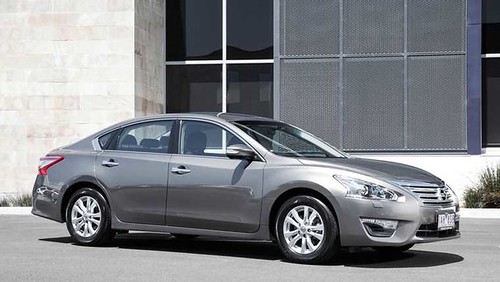
8. **Nissan Altima**The Nissan Altima is another car that frequently appears on lists of vehicles owners regret purchasing. Its primary source of contention, much like other Nissan models of its era, centers on the continuously variable transmission (CVT). This transmission, especially in models from 2013 to 2019, is widely cited for its problematic operation and contribution to an overall unsatisfactory driving experience.
Owners frequently report significant issues with the Altima’s CVT, including problems with its reliability and performance. These transmission troubles often manifest as a “droning noise during acceleration,” which many drivers find irritating and detracts from the refinement expected of a midsize sedan. Such issues contribute to a general lack of confidence in the vehicle’s long-term dependability.
Beyond the transmission, the Nissan Altima also faces criticism for its steering, which some owners find less responsive or precise than desired. Additionally, “excessive oil consumption” and “oil leaks” are noted problems, leading to increased maintenance efforts and potential repair costs. These issues, while perhaps not as catastrophic as some others, collectively diminish the ownership experience and add to the reasons for buyer’s remorse.
Furthermore, the Altima’s braking performance has “consistently underperformed in testing,” requiring longer stopping distances than many competitors. Coupled with an infotainment system described as “dated and unresponsive,” these “quality-of-life issues” mean that while the Altima may be “reliable overall,” its ownership experience is often less satisfying than expected, leading many to wish they had chosen differently.
Car Model Information: 2015 Nissan Altima 2.5 S
Name: Nissan Altima
Caption: 2024 Nissan Altima SR (L34; US)
Manufacturer: Nissan
Aka: Nissan Bluebird
Production: 1992–present
Class: Compact car
Predecessor: Nissan Bluebird,Nissan Stanza
ModelYears: 1993–present
Categories: 2000s cars, 2010s cars, 2020s cars, All-wheel-drive vehicles, All Wikipedia articles written in American English
Summary: The Nissan Altima is a mid-size car manufactured by Nissan since 1992. It is a continuation of the Nissan Bluebird line, which began in 1955.
The Altima has historically been larger, more powerful, and more luxurious than the Nissan Sentra but less so than the Nissan Maxima. The first through fourth-generation cars were manufactured exclusively in the United States and officially sold in North and South America, along with the Middle East and Australia. For other markets, Nissan sold a related mid-size sedan called the Nissan Teana which was between the Altima and Maxima in terms of size. In 2013, the Teana became a rebadged version of the fifth-generation Altima.
The name “Altima” was originally applied to a top trim line of the Nissan Leopard for the Japanese market in 1986, and then to the Nissan Laurel Altima mid-size car sold in Central America and the Caribbean before 1992. In 1992, Nissan discontinued the Stanza which was a Nissan Bluebird clone, replacing it with the US-built Altima, while remaining a compact car. The first Altima was produced in June 1992, as a 1993 model. All Altima models for the North American market were built in Smyrna, Tennessee, until June 2004, when Nissan’s Canton, Mississippi plant also began producing the model to meet high demand.
Get more information about: Nissan Altima
Buying a high-performing used car >>>
Brand: Nissan Model: Altima
Price: $8,235 Mileage: 117,517 mi.
Read more about: 12 Cars That Made Drivers Say ‘Nope, Not Again!’ – Your Ultimate Guide to Avoiding Instant Regret on Wheels
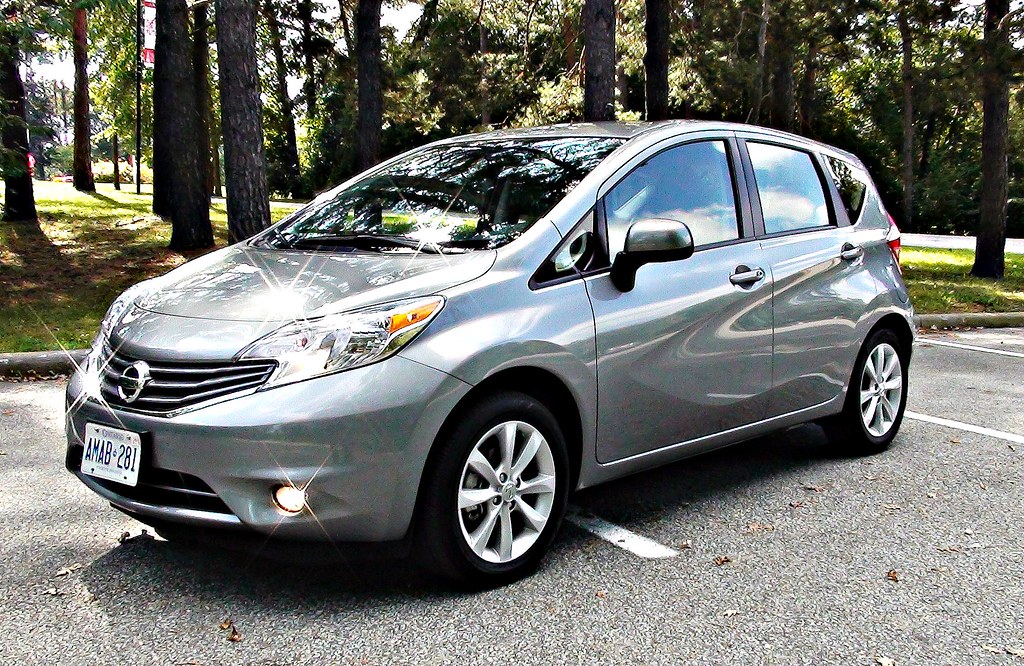
9. **Nissan Versa Note**Marketed as a super-cheap small hatchback, the Nissan Versa Note’s low price point, unfortunately, often reflects its overall quality level, leading to significant owner dissatisfaction. Despite its affordability, the vehicle frequently failed to deliver a truly rewarding or reliable driving experience, becoming a common source of regret for its purchasers. The compromises made for its budget-friendly cost often became glaring issues in daily use.
A major point of frustration for Nissan Versa Note owners was its transmission, another iteration of the problematic Continuously Variable Transmission (CVT) found in several Nissan models. This CVT, much like its counterparts, proved to be a persistent headache, contributing to a lackluster and often unreliable driving experience that left owners “frustrated…to no end.” The transmission’s performance issues significantly undermined the vehicle’s practicality.
Compounding the transmission problems was the vehicle’s “anemic acceleration” delivered by its 1.6-liter 4-cylinder engine. This lack of power made merging onto highways or performing overtakes a “nerve-wracking” experience, highlighting a significant performance shortfall. For a car intended for daily commuting, this underpowered engine combined with a problematic CVT meant the Versa Note struggled to meet even basic expectations for confident and comfortable driving.
Ultimately, the Nissan Versa Note’s combination of a troublesome CVT and weak engine performance solidified its position as a vehicle owners frequently regret. While its initial low cost might have been appealing, the ongoing frustrations with its core mechanical components and unimpressive driving dynamics quickly overshadowed any perceived savings, prompting many to advise against its purchase.
Car Model Information: 2019 Cadillac Escalade Platinum
Categories: All set index articles, Articles with short description, CS1 Mexican Spanish-language sources (es-mx), CS1 Portuguese-language sources (pt), CS1 Spanish-language sources (es)
Summary: Nissan Versa is an automobile nameplate used by the Japanese manufacturer Nissan in the Americas for the following models:
According to a Nissan press release in 2008, “versa” is short for “versatile space” meant to imply the spaciousness of the interior and configurable cargo arrangements. The Versa is one of the few remaining subcompact cars left on sale in the North American market, with most automakers dropping small cars from their lineups to focus on crossovers and SUVs.
Get more information about: Nissan Versa
Buying a high-performing used car >>>
Brand: Nissan Model: Versa Note
Price: $37,811 Mileage: 84,091 mi.
Read more about: 12 Cars That Made Drivers Say ‘Nope, Not Again!’ – Your Ultimate Guide to Avoiding Instant Regret on Wheels
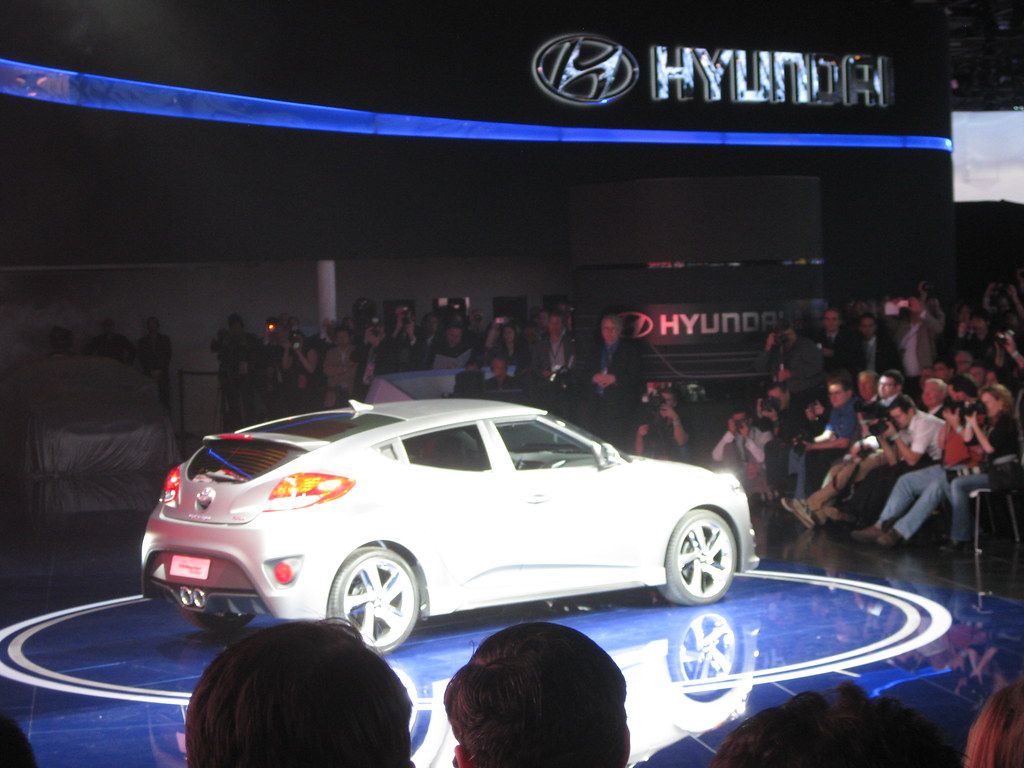
10. **Hyundai Veloster**The Hyundai Veloster, with its distinctive styling, three doors, and responsive handling, certainly presented itself as a cool-looking and potentially engaging car. However, beneath this attractive exterior, a series of significant problems have made it difficult for owners to ignore, transforming initial excitement into profound buyer’s remorse. The vehicle’s aesthetic appeal often couldn’t compensate for its underlying mechanical flaws.
Among the most severe issues reported by Veloster owners are pervasive “engine issues that can lead to catastrophic failure.” Such critical mechanical problems represent a major safety concern and inevitably lead to extremely costly repairs, if not the complete loss of the vehicle. This fundamental flaw significantly undermines any positive attributes the car might possess, making it a high-risk purchase for consumers.
Furthermore, the Veloster’s dual-clutch transmission has been a source of frequent complaints, exhibiting a range of performance deficiencies. Owners have reported “issues like delayed acceleration, slipping, and jerky shifts,” which severely detract from the driving experience. These transmission woes not only impact comfort and responsiveness but also signal potential long-term reliability concerns, adding to the vehicle’s list of significant drawbacks.
As if engine and transmission problems weren’t enough, the Hyundai Veloster also faces criticism for its “suspension and steering problems.” These issues can affect ride comfort, handling precision, and overall driver confidence, contributing to a less stable and enjoyable ride. The cumulative effect of these widespread mechanical faults means that despite its distinctive appearance, the Veloster often fails to deliver the dependable and satisfying ownership experience expected, leading many to wish they had looked elsewhere.
Car Model Information: 2012 Hyundai Veloster Base
Name: Hyundai Veloster
Manufacturer: Hyundai Motor Company
Production: 2011–2022
Class: Sport compact car
Layout: Front-engine, front-wheel-drive layout
BodyStyle: hatchback
Predecessor: Hyundai Tiburon
ModelYears: 2012–2022
Assembly: Ulsan
Categories: All Wikipedia articles in need of updating, All articles with unsourced statements, Articles containing Korean-language text, Articles with short description, Articles with unsourced statements from May 2018
Summary: The Hyundai Veloster (Korean: 현대 벨로스터, romanized: Hyeondae Belloseuteo) is a compact car first produced in 2011 by Hyundai, with sales beginning in South Korea on March 10, 2011, and in Canada and the United States since the fall of 2011. In South Korea, it was marketed under Hyundai’s ‘Premium Youth Lab’. It was unveiled on January 10, 2011, at the Detroit Auto Show, and fills the void left when Hyundai discontinued the Hyundai Tiburon after the 2008 model year.
The car differs from most other hatchbacks with its asymmetrical door configuration, featuring one large door on the driver side and two smaller doors on the passenger side. This configuration is more common on commercial vehicles and minivans.
Get more information about: Hyundai Veloster
Buying a high-performing used car >>>
Brand: Hyundai Model: Veloster
Price: $7,950 Mileage: 83,462 mi.
Read more about: 12 Cars That Made Drivers Say ‘Nope, Not Again!’ – Your Ultimate Guide to Avoiding Instant Regret on Wheels
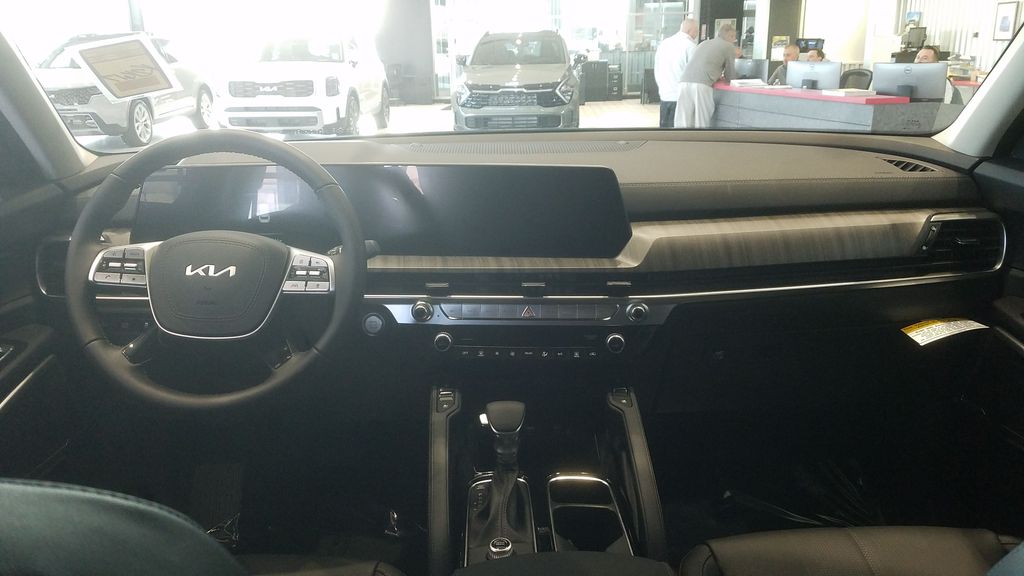
11. **Kia Rio**The Kia Rio, often recognized for its affordability and fuel efficiency, unfortunately also garners a significant amount of buyer’s remorse among its owners. While these practical advantages might initially attract budget-conscious buyers, a closer look at the ownership experience reveals a series of compromises and mechanical issues that often leave drivers feeling disappointed with their purchase. Its low entry price frequently comes at the cost of long-term satisfaction.
A primary concern for Kia Rio owners revolves around persistent “engine issues.” These problems commonly include “rough idling and misfires,” which are typically attributed to “problems with the spark plugs or ignition coils.” Such engine irregularities not only affect the vehicle’s performance and fuel economy but can also lead to more significant and costly repairs if left unaddressed, adding an unexpected financial burden.
Beyond the engine bay, owners also frequently complain about the “cheap interior quality.” This translates to materials that may not stand up well to daily wear and tear, and a general lack of refinement that detracts from the driving environment. Coupled with “comfort issues,” particularly on longer journeys, the interior shortcomings make the overall experience of owning and driving a Kia Rio less pleasant than anticipated, reinforcing the feeling of regret.
In essence, while the Kia Rio attempts to offer an economical solution for transportation, its pervasive engine troubles, combined with noticeable deficiencies in interior quality and comfort, often overshadow its affordability. These persistent issues contribute to a sense of “buyer’s remorse,” as owners realize that the initial savings are often offset by ongoing frustrations and a less-than-ideal daily driving experience.
Car Model Information: 2023 Kia Rio S
Name: Kia Rio
Caption: Fourth generation Kia Rio
Manufacturer: Kia
Aka: Kia Pride (2005–2017),Kia K2 (China; 2011–2020)
Production: November 1999 – December 2023
ModelYears: 2001–2023 (North America)
BodyStyle: hatchback
Class: Subcompact car
Layout: Front-engine, front-wheel-drive layout
Predecessor: Kia Pride,Kia Avella
Successor: Kia K3 (BL7)
Categories: 2000s cars, 2010s cars, Articles containing Korean-language text, Articles with short description, CS1 Croatian-language sources (hr)
Summary: The Kia Rio (Korean: 기아 리오) is a subcompact car manufactured by Kia from 1999 to 2023. Body styles have included a three and five-door hatchback and four-door sedan, equipped with inline-four gasoline and diesel engines, and front-wheel drive.
The Rio replaced the first generation Pride—a rebadged version of the Ford Festiva—and the Avella, a subcompact sold as a Ford in some markets. A second generation was introduced in 2005 in Europe and in 2006 in North America, sharing its platform with the Hyundai Accent, a subcompact manufactured by its sister Hyundai Motor Company in South Korea.
In August 2023, the K3 was introduced as its successor in several markets such as Mexico and the GCC countries.
Get more information about: Kia Rio
Buying a high-performing used car >>>
Brand: Kia Model: Rio
Price: $17,218 Mileage: 22,509 mi.
Read more about: 12 Cars That Made Drivers Say ‘Nope, Not Again!’ – Your Ultimate Guide to Avoiding Instant Regret on Wheels
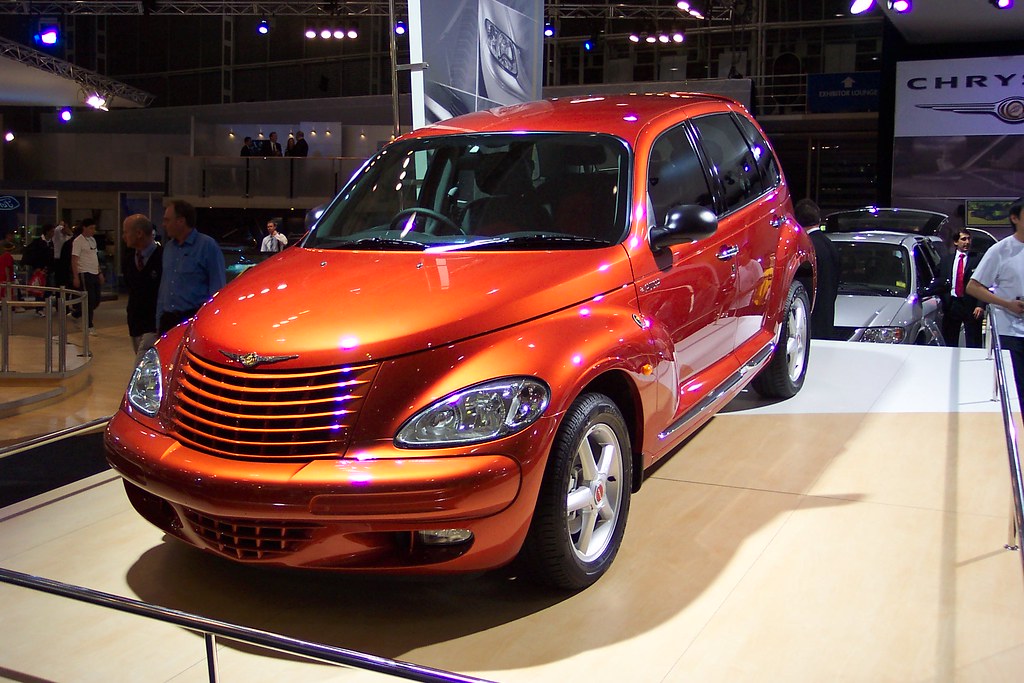
12. **Chrysler PT Cruiser**The Chrysler PT Cruiser is a vehicle that has certainly left a lasting impression, though often a polarizing one due to its distinctive retro styling that people either “love or hate — or is that love to hate?” However, the vehicle’s aesthetics are far from the only issues that have led countless owners to regret their purchase. Beneath its unique exterior, the PT Cruiser suffered from a host of mechanical and electrical problems that made ownership a significant headache.
Indeed, the PT Cruiser is notorious for having “engine issues galore.” These problems range from frustrating “stalling” and “rough idling” to more severe and costly concerns such as “overheating and head gasket failure.” Such widespread engine deficiencies indicate a fundamental lack of reliability in one of the car’s most critical components, leading to frequent breakdowns and expensive repair bills that quickly diminish its appeal.
Adding to the long list of complaints, the Chrysler PT Cruiser also experienced persistent “transmission and electrical problems, among other things.” Transmission malfunctions could impact driveability and safety, while electrical issues might affect anything from power windows to critical vehicle sensors, leading to unpredictable operation and diagnostic challenges. These systemic failures across multiple vital systems left many owners thoroughly disillusioned.
The cumulative effect of these extensive mechanical and electrical reliability problems means that owners often “regretting their buying decision” for the Chrysler PT Cruiser. Despite its unique character, the vehicle’s inability to deliver consistent, dependable performance turned it into a money pit and a source of constant frustration, demonstrating that distinctive style alone cannot compensate for fundamental engineering shortcomings.
Car Model Information: 2021 Volkswagen Atlas 2.0T SE
Name: Chrysler PT Cruiser
Manufacturer: Chrysler
ModelCode: PT,PG
Production: 2000–2010
ModelYears: 2001–2010
Assembly: Toluca, Mexico State
Designer: Bryan Nesbitt
Class: Compact car
BodyStyle: convertible
Platform: Chrysler PT platform
Related: Dodge SRT4,Dodge Neon
Predecessor: Dodge Neon
Successor: Lancia Delta#Third generation
Layout: Front-engine, front-wheel-drive layout
Engine: ubl
Transmission: Ultradrive#40TE
Wheelbase: 103 in
Abbr: on
Length: 168.8 in
Width: 67.1 in
Height: 63 in
Weight: 3123 lb
Categories: 2010s cars, All articles with unsourced statements, Articles with short description, Articles with unsourced statements from March 2018, Cars discontinued in 2010
Summary: The Chrysler PT Cruiser is a compact car that was built by the American company Chrysler from 2001 until 2010. Introduced as a five-door hatchback wagon, a two-door convertible variant was also made from 2005 until 2008.
Originally planned as a Plymouth model, the PT Cruiser was ultimately marketed as a Chrysler when Plymouth was discontinued. Intended to invoke 1930s aesthetics, the exterior of the PT Cruiser was designed by Bryan Nesbitt. The model received an intermediate facelift for the 2006 model year. Interior packaging was noted for its high roof, high h-point seating, and flexible cargo and passenger configurations enabled by a multi-level rear cargo shelf and rear seats a user could fold, tumble, or remove.
The PT Cruiser was produced in Mexico and Austria at the Toluca Car Assembly and Eurostar Automobilwerk factories respectively. By the end of production in July 2010, worldwide production had reached 1.35 million.
In its nameplate, PT stands for “Personal Transport” or “Personal Transportation”. PT was the PT Cruiser’s product code for the Mexican-made units.
Get more information about: Chrysler PT Cruiser
Buying a high-performing used car >>>
Brand: Chrysler Model: PT Cruiser
Price: $25,919 Mileage: 49,076 mi.
Read more about: 12 Cars That Made Drivers Say ‘Nope, Not Again!’ – Your Ultimate Guide to Avoiding Instant Regret on Wheels
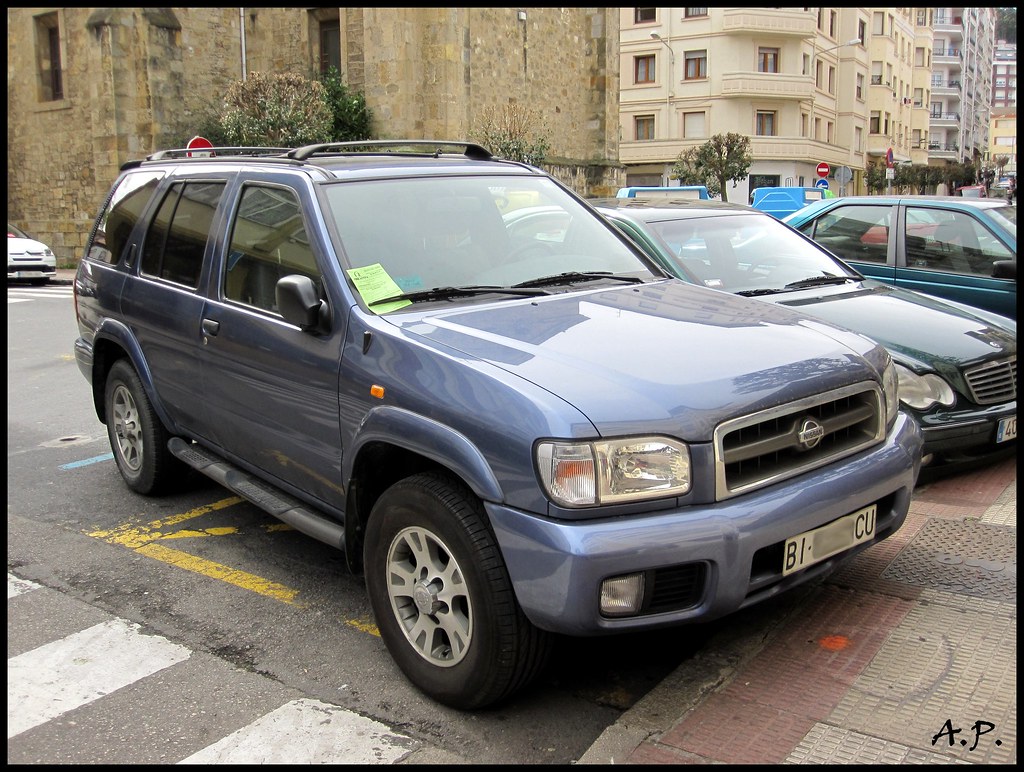
13. **Nissan Pathfinder**As a popular SUV, the Nissan Pathfinder has unfortunately become known for a recurring pattern of problems that leave its owners regretting their purchasing decisions. Despite its appeal as a family or adventure vehicle, various model years have been plagued by significant mechanical issues, particularly concerning its powertrain, which significantly undermined its reputation for reliability.
A primary “issue of contention” with the Nissan Pathfinder, much like several other Nissan models of its era, is the Continuously Variable Transmission (CVT). Owners have frequently experienced a range of frustrating symptoms, including “rough shifting, shuddering, and even overheating.” These transmission problems not only create an uncomfortable and unpredictable driving experience but also often lead to “replacing the transmission” entirely, an extremely costly repair that infuriates owners.
Beyond the pervasive CVT problems, Pathfinder owners also report persistent “engine issues.” These can manifest in various ways, from reduced performance to more serious mechanical failures that compromise the vehicle’s long-term health and operational expense. Furthermore, “fuel system problems” are another source of frustration, potentially leading to inefficient operation, reduced range, and additional repair costs that add to the burden of ownership.
Collectively, the combination of widespread and severe CVT malfunctions, coupled with engine and fuel system reliability issues, makes the Nissan Pathfinder a frequent source of profound buyer’s remorse. For an SUV marketed for its capability and family suitability, these significant mechanical shortcomings often lead to unexpected expenses and inconvenient downtime, prompting many to wish they had explored more reliable alternatives.
Car Model Information: 2023 Nissan Pathfinder SL
Name: Nissan Pathfinder
Caption: 2022 Nissan Pathfinder Platinum 4WD (R53, US)
Manufacturer: Nissan
Production: 1985–present
ModelYears: unbulleted list
Layout: unbulleted list
Class: unbulleted list
Chassis: unbulleted list
Predecessor: unbulleted list
Successor: unbulleted list
Categories: 1990s cars, 2000s cars, 2010s cars, 2020s cars, All-wheel-drive vehicles
Summary: The Nissan Pathfinder is a range of sport utility vehicles manufactured by Nissan since 1985. Until the third-generation model, the Pathfinder is based on Nissan’s compact pickup truck platform which it shares with the Navara/Frontier.
The Pathfinder was marketed as the Nissan Terrano (Japanese: 日産・テラノ, Hepburn: Nissan Terano) outside North America. Beginning in 2004, the vehicles were marketed globally as the Pathfinder.
In 2012, the R52 series Pathfinder was released as a three-row crossover SUV based on the unibody Nissan D platform, moving away from the body-on-frame chassis format. The role of a mid-size body-on-frame SUV in Nissan’s global lineup was passed to the Terra/X-Terra, which was released in 2018 and based on the D23 series Navara.
Get more information about: Nissan Pathfinder
Buying a high-performing used car >>>
Brand: Nissan Model: Pathfinder
Price: $33,900 Mileage: 18,055 mi.
Read more about: 11 SUVs That Promise Adventure But Deliver Owners Immediate Regret
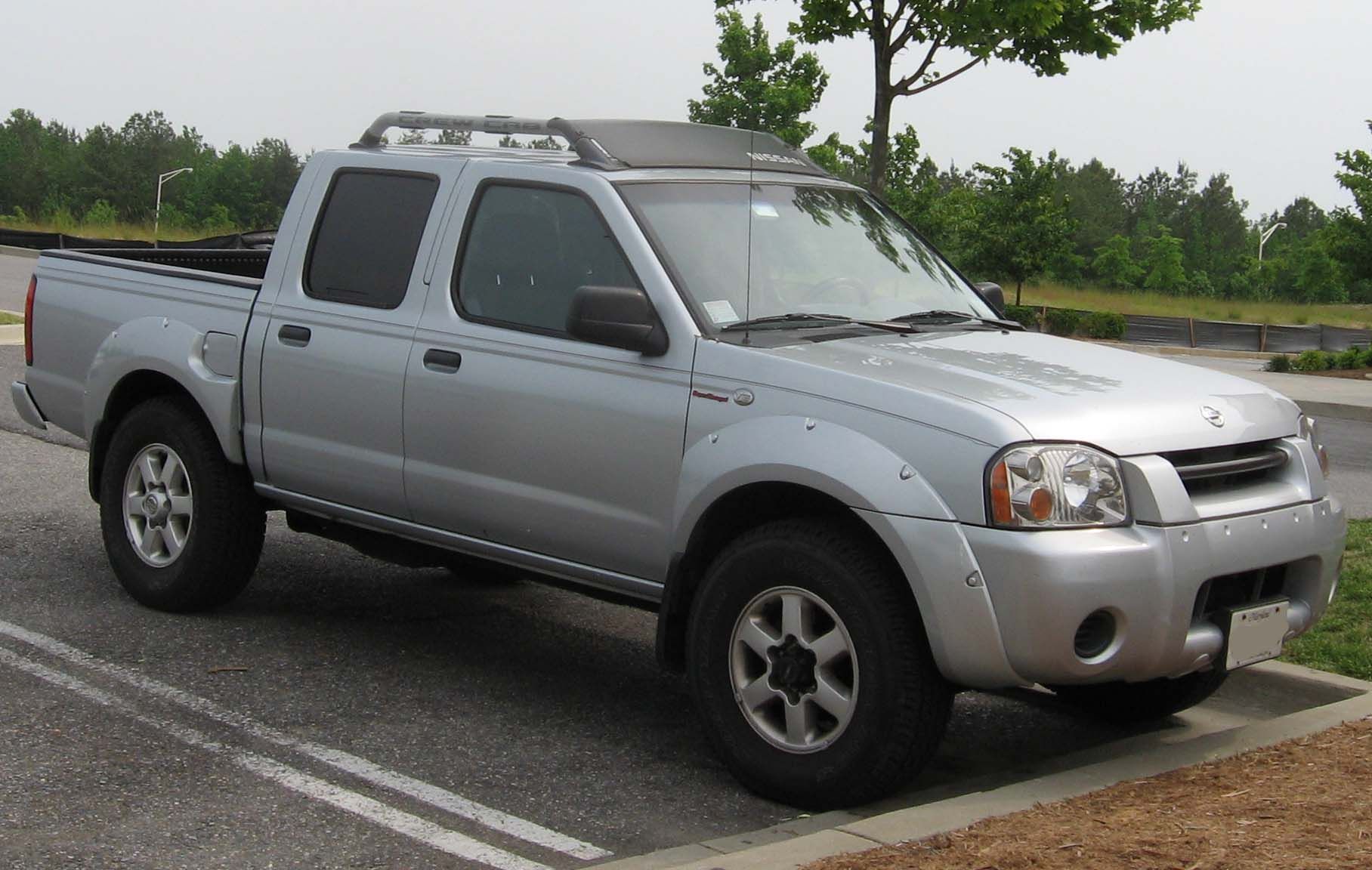
14. **Nissan Frontier**The Nissan Frontier, a mid-size pickup truck, has a history marred by numerous problems that have left many owners exasperated, often figuratively “shaking their heads and pounding the dashboard with their fists.” While pickups are generally expected to be rugged and dependable workhorses, certain model years of the Frontier have proven to be anything but, becoming a significant source of frustration and regret.
A particularly notorious period for the Nissan Frontier, specifically the “2005 to 2010 model years,” is highlighted for its severe transmission issues. The root cause of this widespread problem was a design flaw where the “radiator leaks coolant into the transmissions.” This critical design oversight led to a cascade of mechanical failures, including “slipping gears, herky-jerky shifting, and transmission failure,” which are catastrophic for any vehicle, especially a truck.
Beyond these severe transmission defects, owners of the Nissan Frontier have also reported persistent “engine and timing chain issues.” Engine problems can lead to reduced performance, increased fuel consumption, and costly repairs, while timing chain issues are often expensive and complex to fix, potentially leading to catastrophic engine damage if neglected. These recurring mechanical faults significantly impact the truck’s reliability and long-term value.
The Nissan Frontier, particularly the models from 2005 to 2010, represents a cautionary tale in automotive reliability. The fundamental design flaw leading to coolant contamination in the transmission, combined with ongoing engine and timing chain issues, created a truck that consistently failed to meet expectations for durability and dependability. These profound problems cemented its place as a vehicle many owners wished they had never purchased.
Car Model Information: 2022 Nissan Frontier SV
Categories: All set index articles, Articles with short description, Nissan vehicles, Set index articles on cars, Short description is different from Wikidata
Summary: The Nissan Frontier is a nameplate used on three different pickup truck models by Nissan:
Nissan Frontier (international), an alternative nameplate for the NP300/Navara on some markets
Nissan Frontier (North America), a rebadged NP300/Navara from 1997 to 2021, then became a separate model since 2021
Nissan Frontier Pro, a rebadged Dongfeng Z9 PHEV that will be available from 2025.
Get more information about: Nissan Frontier
Buying a high-performing used car >>>
Brand: Nissan Model: Frontier
Price: $25,994 Mileage: 27,629 mi.
Read more about: 11 SUVs That Promise Adventure But Deliver Owners Immediate Regret
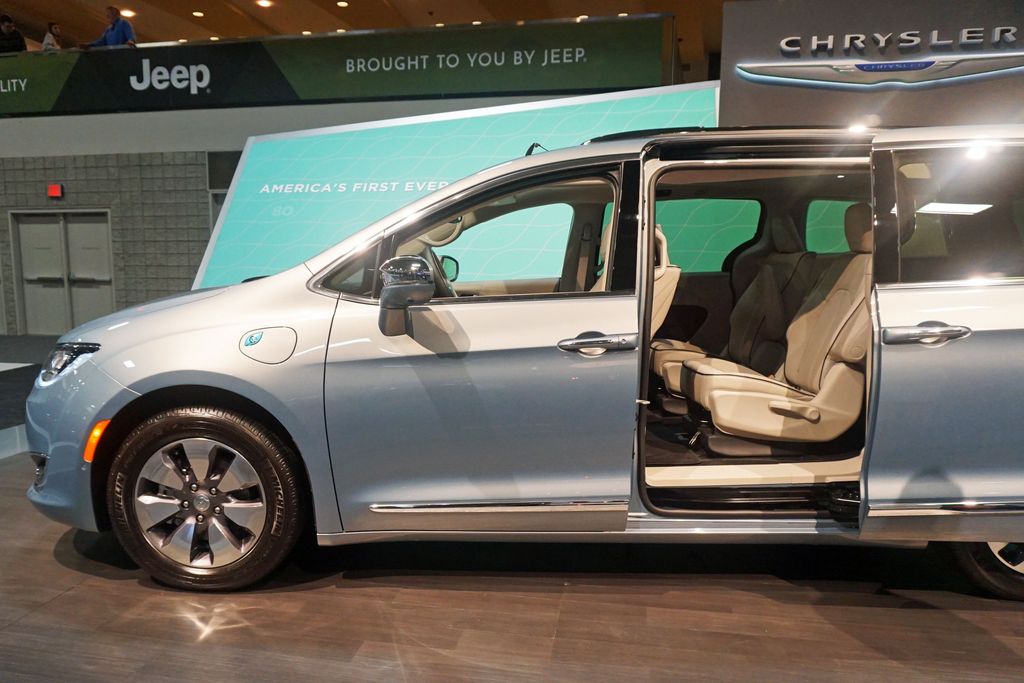
15. **Chrysler Pacifica Hybrid**The Chrysler Pacifica Hybrid, while a popular minivan that offers the appeal of fuel efficiency through its plug-in hybrid powertrain, has also proven to be significantly problematic. For many owners, the promise of reduced fuel consumption simply hasn’t been enough to offset the numerous underlying “battery and electrical problems” that have plagued this vehicle, leading to considerable buyer’s remorse.
Owners frequently report a range of issues stemming from the hybrid system, including “battery drain, inconsistent all-electric range, and battery failure.” These problems directly undermine the core benefit of a hybrid vehicle – reliable electric-assisted driving and fuel savings. When the battery system, a central component of the hybrid’s appeal, proves undependable, the entire value proposition of the vehicle is compromised.
Furthermore, the list of problems extends beyond just the battery. The “electric continuous variable transmission” in the Pacifica Hybrid is another noted source of issues, potentially affecting smooth power delivery and overall driving performance. The phrase “And the list goes on” from the context suggests that these are not isolated incidents but part of a broader pattern of reliability concerns across various vehicle systems.
Ultimately, despite its innovative hybrid powertrain and family-friendly utility, the Chrysler Pacifica Hybrid has struggled to deliver consistent reliability, particularly in its most critical and complex components. The prevalence of battery, electrical, and transmission issues means that many owners, despite initial hopes for efficiency, conclude that its benefits are outweighed by its persistent problems, firmly placing it on the list of vehicles they would “unselect” if they could.
Car Model Information: 2018 Chrysler Pacifica Hybrid Limited
Categories: All set index articles, Articles with short description, Chrysler vehicles, Set index articles on cars, Short description is different from Wikidata
Summary: Chrysler Pacifica is a nameplate used by Chrysler for a variety of vehicles.
The name was first used on a luxury minivan concept vehicle in 1999, and later a crossover concept in 2002.
From 2004 to 2008, it was used on a mid-size crossover, and since the 2017 model year, it has been used as the Town & Country minivan’s replacement.
Vehicles using the nameplate are:
Chrysler Pacifica concept (1999), concept minivan
Chrysler Pacifica concept (2002), concept crossover
Chrysler Pacifica (crossover) (2004–2008), production version of the 2002 concept
Chrysler Pacifica (minivan) (2017–present), Chrysler Town & Country replacement
Get more information about: Chrysler Pacifica
Buying a high-performing used car >>>
Brand: Chrysler Model: Pacifica
Price: $17,961 Mileage: 106,685 mi.
Read more about: 12 Cars That Made Drivers Say ‘Nope, Not Again!’ – Your Ultimate Guide to Avoiding Instant Regret on Wheels
In light of these numerous examples, it becomes abundantly clear that true automotive satisfaction stems from more than just initial appeal or a tempting price tag. The documented experiences of countless owners powerfully underscore the critical importance of diligent research before making a purchase. Investing in a vehicle that consistently disappoints with mechanical failures, electrical glitches, or fundamental design shortcomings inevitably transforms a hopeful acquisition into a persistent source of stress, inconvenience, and often significant financial burden. By thoroughly examining these widespread reports of buyer’s remorse and prioritizing long-term reliability over fleeting allure, consumers are better equipped to navigate the complex automotive market and make choices that lead to enduring satisfaction, rather than regret.

